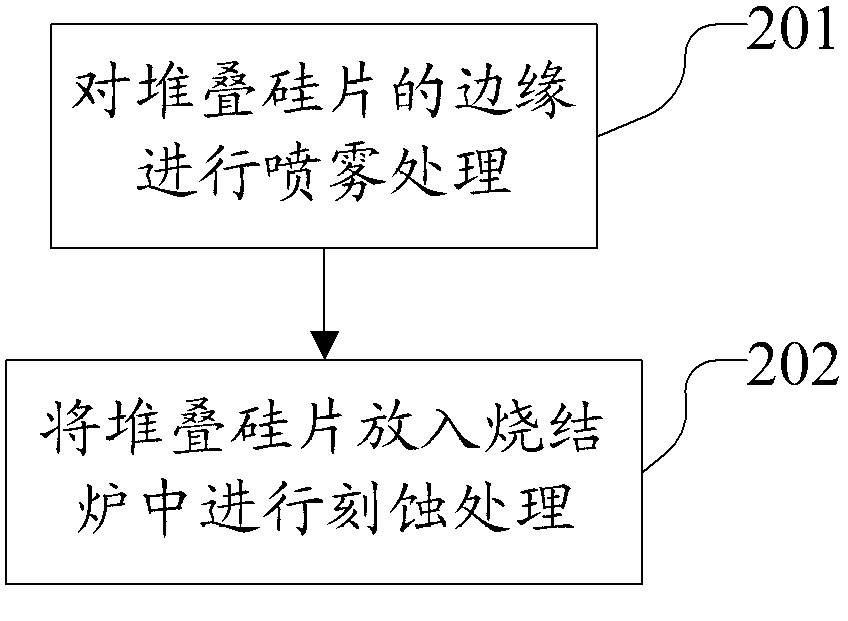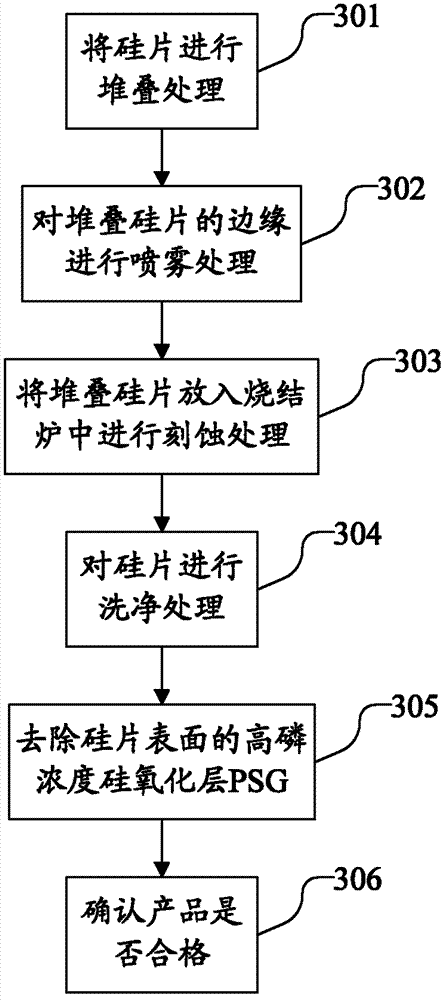Edge etching process applied to polycrystalline silicon solar cell
A technology of solar cells and polycrystalline silicon, applied in the field of solar energy, can solve the problem of wasting the effective utilization area of PN junctions on the surface of silicon wafers, and achieve the effect of avoiding the risk of strong corrosive acid and improving the effective utilization area.
- Summary
- Abstract
- Description
- Claims
- Application Information
AI Technical Summary
Problems solved by technology
Method used
Image
Examples
Embodiment Construction
[0022] An embodiment of the present invention provides an edge etching process applied to polycrystalline silicon solar cells, which is used to replace the back etching process in the current manufacturing process of polycrystalline silicon solar cells. Using this edge etching process, the etching width can be about 50 microns, improve the effective use area of the PN junction on the surface of the silicon wafer, and avoid the risk of using strong corrosive acid.
[0023] In the first embodiment of the present invention, please refer to figure 2 ,mainly include:
[0024] 201. Perform spray treatment on the edges of the stacked silicon wafers.
[0025] This step is carried out in a spray chamber, usually hundreds of silicon wafers are sprayed at the same time, these hundreds of silicon wafers will be processed into stacked silicon wafers, and then the edges of the stacked silicon wafers are sprayed. When spraying, the nozzles are used to spray the surrounding edges of the ...
PUM
 Login to View More
Login to View More Abstract
Description
Claims
Application Information
 Login to View More
Login to View More - R&D
- Intellectual Property
- Life Sciences
- Materials
- Tech Scout
- Unparalleled Data Quality
- Higher Quality Content
- 60% Fewer Hallucinations
Browse by: Latest US Patents, China's latest patents, Technical Efficacy Thesaurus, Application Domain, Technology Topic, Popular Technical Reports.
© 2025 PatSnap. All rights reserved.Legal|Privacy policy|Modern Slavery Act Transparency Statement|Sitemap|About US| Contact US: help@patsnap.com



